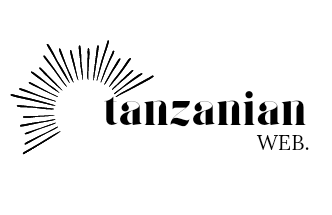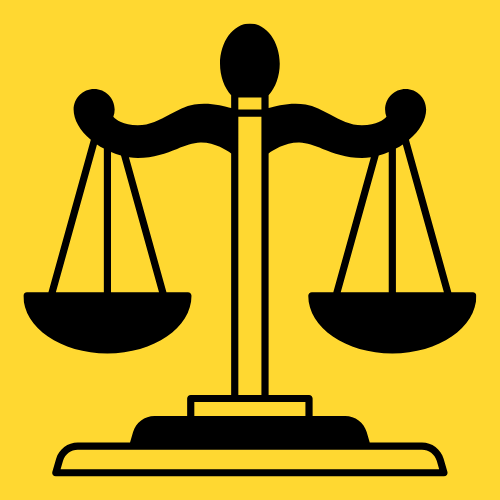“200”, Aptitude Test
Questions and Answers for VTS Operator II – Tanzania Ports Authority (TPA).
This set of 200 multiple choice questions
is designed to prepare candidates for the VTS Operator II online aptitude test
in Tanzania. The questions reflect the core duties and responsibilities of a
Vessel Traffic Services operator, including radar operation, vessel monitoring,
electronic navigation systems, maritime communication protocols, emergency
response coordination, and adherence to international maritime regulations such
as GMDSS, SOLAS, and STCW. Each question tests the candidate’s understanding,
situational awareness, and ability to make accurate, safety-focused decisions
in a complex maritime environment. The format follows a practical approach,
using realistic scenarios to reflect the actual demands of the VTS role.
Prepared by:
VTS Operators and Compiled by
A lawyer stationed in Dar-es-salaam.
0628729934.
Date: June 10, 2025
Dear applicants,
This collection of questions and answers
has been carefully prepared to help all of you to understand the key areas
tested during the interview. The goal is to provide a useful, and practical
study guide so you can all perform confidently and fairly in the selection
process. I wish you the best of luck, and may this resource support you in
achieving success!
Warm regards,
Johnson Yesaya Mgelwa
For Personal Use by Applicants Preparing
for VTS Operator II interview at Tanzania Ports Authority (TPA).
ALL
QUESTIONS ARE COMPILED TOGETHER.
1. Which equipment is primarily used to monitor vessel movement in a VTS center?
A. GPS receiver B. Radar system C. Sonar equipment D. AIS decoder
Answer: B. Radar system
2. What is the main role of the Global Maritime Distress and Safety System (GMDSS)?
A. Fuel management B. Cargo loading C. Maritime communication D. Engine control
Answer: C. Maritime
communication
3. In vessel traffic
monitoring, what does plotting a vessel's position help determine?
A. Depth of seabed B. Type of cargo C. Direction and speed D. Length of vessel
Answer: C. Direction
and speed
4. What is one of the functions of an Electronic Navigation System (ENS)?
A. Dock management B. Shoreline construction C. Navigation assistance D. Cargo
scheduling
Answer: C. Navigation
assistance
5. Which of the following is a crucial skill for interpreting radar images?
A. Meteorological analysis B. Chart plotting C. Linguistic fluency D. Fuel
efficiency tracking
Answer: B. Chart
plotting
6. When monitoring
vessels, which factor is least relevant?
A. Cargo type B. Speed C. Direction D. Position
Answer: A. Cargo type
7. What action should a
VTS operator take if a vessel is on a collision course?
A. Ignore and observe B. Notify port police C. Communicate with vessel
immediately D. Contact local fishermen
Answer: C. Communicate
with vessel immediately
8. Which system allows
ships and coastal authorities to exchange navigational data?
A. GMDSS B. AIS C. GIS D. RADAR
Answer: B. AIS
9. What is one of the
main goals of coordinating traffic information in a port?
A. Increase tourism B. Facilitate safe berthing C. Promote fuel savings D.
Manage ship crews
Answer: B. Facilitate
safe berthing
10. How often should a
VTS operator maintain lookout via system monitors?
A. Weekly B. Occasionally C. Continuously D. During storms only
Answer: C. Continuously
11. Which regulation
covers Officer in Charge of a Navigational Watch (OICNW) on ships 500 GRT or
more?
A. Reg. IV/1 B. Reg. III/2 C. Reg. II/1 D. Reg. I/4
Answer: C. Reg. II/1
12. What is the
recommended method to respond during a search and rescue alert?
A. Wait for port manager B. Take no action C. Coordinate maritime communication D.
Close VTS operations
Answer: C. Coordinate
maritime communication
13. What does
maintaining a proper lookout by radar help prevent?
A. Radio failure B. Crew fatigue C. Vessel collision D. Cargo delay
Answer: C. Vessel
collision
14. Which communication
protocol is standard for emergency calls at sea?
A. Morse code B. VHF channel 16 C. Email system D. Mobile phone
Answer: B. VHF channel
16
15. What does
“berthing” mean in maritime operations?
A. Anchoring offshore B. Refueling a vessel C. Docking a vessel at a pier D.
Offloading passengers
Answer: C. Docking a
vessel at a pier
16. What is one
essential responsibility during port traffic coordination?
A. Selling fuel B. Tracking engine oil C. Monitoring vessel positions D.
Booking hotels for crews
Answer: C. Monitoring
vessel positions
17. Which of the
following is a characteristic of a good VTS operator?
A. Aggressiveness B. Lack of attention C. Alertness D. Physical strength
Answer: C. Alertness
18. What is the role of
AIS in vessel tracking?
A. Transmitting engine data B. Sending cargo reports C. Sharing position and
identity D. Monitoring weather
Answer: C. Sharing
position and identity
19. What kind of
information must be communicated timely to vessels?
A. Next port of call B. Traffic status and environmental conditions C. Number
of crew D. Name of captain
Answer: B. Traffic
status and environmental conditions
20. Why is continuous
monitoring important in VTS operations?
A. To record hours of work B. To avoid miscommunication C. To ensure timely
rescue and coordination D. To promote tourism.
Answer: C. To ensure
timely rescue and coordination
21. What is an
important feature of ENS?
A. Adjusting ship’s weight B. Reporting crew shifts C. Enhancing navigation
safety D. Measuring container size
Answer: C. Enhancing
navigation safety
22. What does the term
“anchorage” refer to?
A. Area for cargo loading B. Location for fishing C. Safe area to drop anchor D.
Place for oil drilling
Answer: C. Safe area to
drop anchor
23. How does radar
assist in vessel tracking?
A. Detects engine power B. Shows fuel consumption C. Displays vessel location
and motion D. Plays audio alerts
Answer: C. Displays
vessel location and motion
24. Which skill is
required for interpreting ENS data?
A. Driving skills B. Mechanical repair C. Spatial awareness D. Singing ability
Answer: C. Spatial
awareness
25. Who benefits most
from traffic coordination in a busy port?
A. Food vendors B. Ship agents C. All vessels D. Local shops
Answer: C. All vessels
26. Which of the
following is not a responsibility of a VTS operator?
A. Fuel pricing B. GMDSS operation C. Radar monitoring D. Traffic coordination
Answer: A. Fuel pricing
27. Which of these
activities supports maritime safety most directly?
A. Preparing meals on board B. Monitoring vessel routes C. Painting ship decks D. Issuing tickets
Answer: B. Monitoring
vessel routes
28. What does GMDSS stand for?
A. General Marine Defense Signal System B. Global Maritime Distress and Safety
System C. Global Maritime Delivery Standard System D. General Maritime Data
Safety Standard
Answer: B. Global
Maritime Distress and Safety System
29. Why is
communication accuracy important in VTS?
A. For saving fuel B. For crew motivation C. To avoid accidents D. To ensure
higher wages
Answer: C. To avoid
accidents
30. A vessel in
distress near a port should first contact:
A. Police B. Local fisherman C. VTS station D. Cargo manager
Answer: C. VTS station
31. Which frequency
band is typically used in marine VHF radios?
A. 10–30 MHz B. 156–174 MHz C. 88–108 MHz D. 300–400 MHz
Answer: B. 156–174 MHz
32. What does
“plotting” mean in navigation?
A. Fuel estimation B. Cooking route meals C. Marking vessel position on chart D.
Checking vessel crew list
Answer: C. Marking
vessel position on chart
33. What’s the first
step during a search and rescue alert?
A. File a report B. Inform police C. Start coordination and communication D.
Switch off systems
Answer: C. Start
coordination and communication
34. What type of
training enhances VTS competency?
A. Welding B. VTS operations training C. Firefighting D. Catering
Answer: B. VTS
operations training
35. How should
communication with vessels be conducted?
A. Loud shouting B. Walkie-talkies C. Standardized maritime phrases via radio D.
Mobile text messages
Answer: C. Standardized
maritime phrases via radio
36. What’s the purpose
of AIS in port monitoring?
A. To report weather B. To display satellite images C. To identify and track
ships D. To monitor ship food stocks
Answer: C. To identify
and track ships
37. Which document
verifies a person's qualification to work as an OICNW?
A. National ID B. Certificate of Competence C. School Leaving Certificate D.
Logbook
Answer: B. Certificate
of Competence
38. Which sea condition
might require immediate VTS assistance?
A. Calm weather B. High traffic congestion C. Morning sunrise D. Low humidity
Answer: B. High traffic
congestion
39. Which is part of
environmental factors affecting port safety?
A. Crew behavior B. Wind speed and visibility C. Passenger count D. Meal
quality on board
Answer: B. Wind speed
and visibility
40. Which vessel
requires more attention in monitoring?
A. Anchored vessels B. Drifting vessels C. Docked vessels D. Empty vessels
Answer: B. Drifting
vessels
41. What is the meaning
of GRT in maritime terms?
A. Gross Registered Tonnage B. General Radio Transmitter C. Great River
Transportation D. Gross Real Time
Answer: A. Gross
Registered Tonnage
42. What should a VTS
operator do when vessels get too close?
A. Inform the kitchen staff B. Record the event silently C. Alert both vessels
and provide guidance D. Turn off radar
Answer: C. Alert both
vessels and provide guidance
43. What is the best
tool for plotting real-time vessel positions?
A. Compass B. Stopwatch C. Electronic chart system D. Diary
Answer: C. Electronic
chart system
44. What are the three
key factors in vessel traffic monitoring?
A. Color, height, weight B. Position, speed, direction C. Distance, crew,
passengers D. Time, day, location
Answer: B. Position,
speed, direction
45. Which equipment is used for long-range maritime communication?
A. Bluetooth speaker B. VHF handset C. MF/HF Radio D. Mobile phone
Answer: C. MF/HF Radio
46. Which international
convention governs standards for seafarer training and certification?
A. UNCLOS B. SOLAS C. STCW D. MARPOL
Answer: C. STCW
47. Which vessel status
requires immediate communication from VTS?
A. Sleeping crew B. Engine maintenance C. Distress alert D. Weather check
Answer: C. Distress
alert
48. What is the primary
use of radar in VTS?
A. Check seawater temperature B. Locate fish C. Detect and track ships D.
Operate cranes
Answer: C. Detect and
track ships
49. When is VTS
required to coordinate maritime search and rescue?
A. On public holidays only B. In all emergencies within port limits C. When there is fog D. When crew requests
Answer: B. In all
emergencies within port limits
50. Why is horizontal
communication flow important in VTS?
A. To increase staff wages B. To reduce travel time C. To maintain vessel
traffic safety D. To hire more workers
Answer: C. To maintain
vessel traffic safety
📘 Get the Full Aptitude Test PDF (Questions 51–200)
You’ve just accessed the first 50 questions. The full set of 200 expertly prepared aptitude test questions for the VTS Operator II position is available for download in a PDF format
To receive the full PDF (Questions 51–200), please make a payment of Tsh 10,000 to the LIPA number below:
After payment, please send a text message with the words “VTS Operator II” to:
⚠️ Important Notice
- The PDF is watermarked and protected for personal use only.
- Redistribution, sharing, screenshotting, or copying the contents is strictly prohibited.
- Legal action may be taken against the misuse of this material.
Thank you for supporting quality content. Best of luck in your interview preparation!


%20(10).png)





0 Comments
PLACE YOUR COMMENT HERE
WARNING: DO NOT USE ABUSIVE LANGUAGE BECAUSE IT IS AGAINST THE LAW.
THE COMMENTS OF OUR READERS IS NOT OUR RESPONSIBILITY.